Top Call Center Ticketing Systems in 2025
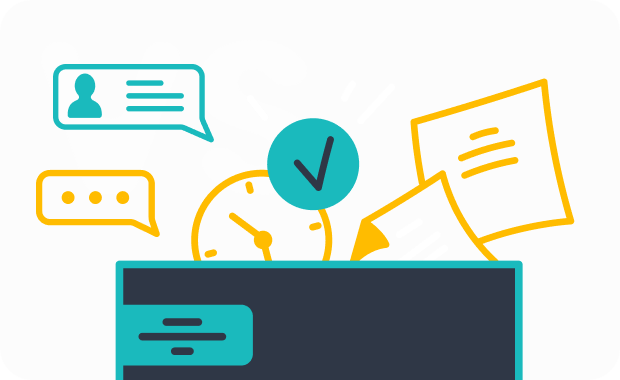
In 2025, a call center ticketing system plays a pivotal role in transforming customer support operations. It ensures faster resolutions, seamless communication, and improved customer experience. For instance, the average speed of answer (ASA) has dropped to 28 seconds, well below the industry target of 40 seconds, showcasing the efficiency of modern systems. Additionally, 65% of customers now expect instant responses, while 70% demand full context during interactions. Meeting these expectations requires advanced tools that unify communication channels and leverage AI for real-time personalization.
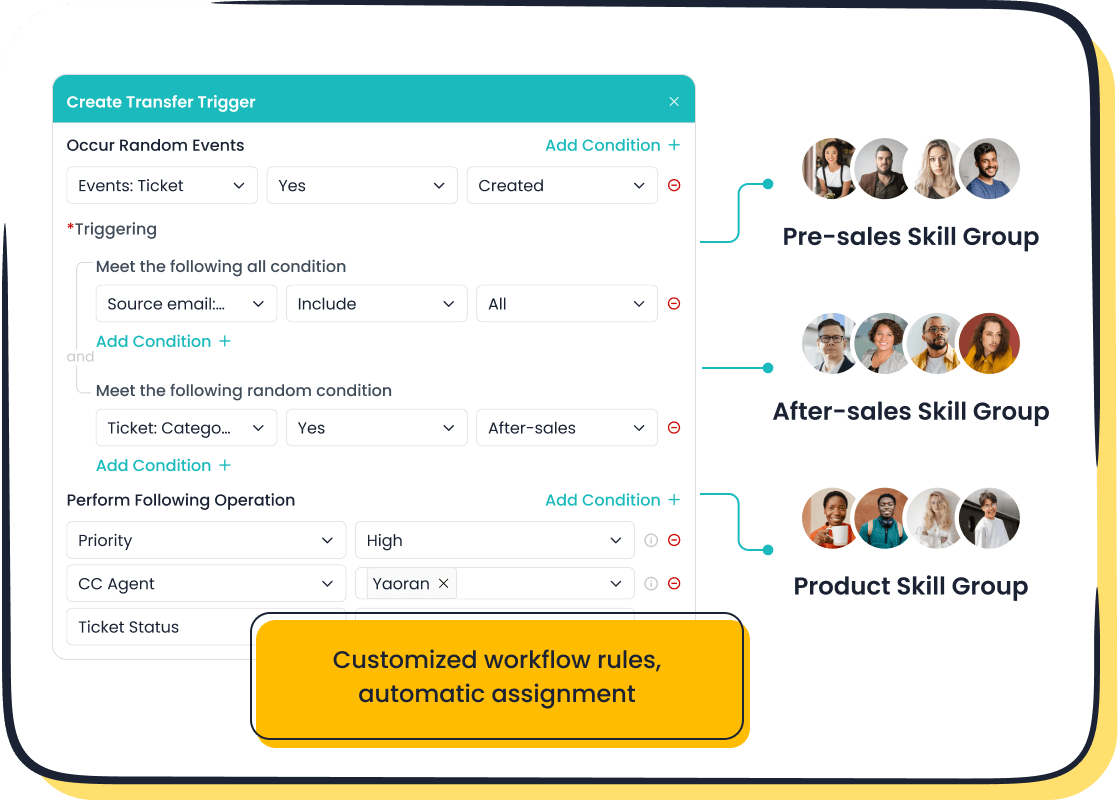
Sobot exemplifies this evolution with its intelligent ticketing system. By automating workflows and integrating omnichannel solutions, Sobot empowers businesses to enhance customer satisfaction and operational efficiency. As customer expectations rise, adopting such systems becomes essential for staying competitive and delivering exceptional service.
What Is a Call Center Ticketing System?
Definition and Purpose
A call center ticketing system is a specialized tool designed to streamline customer support operations. It enables you to manage, track, and resolve customer inquiries efficiently. Unlike traditional methods, this system consolidates all customer interactions into a single platform, ensuring no query goes unanswered.
Did you know? 65% of customers expect instant responses, making ticketing systems essential for meeting these demands.
Key features of a call center ticketing system include omnichannel support, SLA management, and automated workflows. These tools allow you to handle multiple inquiries simultaneously without compromising service quality. For example, Sobot’s ticketing software integrates email, voicemail, and chat into one platform, offering a seamless experience for both agents and customers. This unified approach not only enhances efficiency but also improves customer satisfaction.
| Feature | Description |
|---|---|
| User-friendly interface | A simple interface for both agents and customers to navigate easily. |
| Customized workflows | Tailored workflows that adapt to the specific needs of different contact centers. |
| SLA management | Agreements that define expectations between clients and companies regarding service delivery. |
| Omnichannel support | Integration across multiple communication channels for a seamless customer experience. |
How It Differs from General Help Desk Software
While both call center ticketing systems and help desk software aim to improve customer service, their focus areas differ significantly. Help desk software typically addresses IT-related issues or internal support within an organization. In contrast, a call center ticketing system is tailored for external customer interactions, often involving high volumes of inquiries across various channels.
For instance, help desk ticketing software may prioritize resolving technical glitches within a company. On the other hand, call center software like Sobot’s focuses on managing customer communications, ensuring faster resolutions and better service experiences. Additionally, call center solutions often include advanced features like AI-driven automation and omnichannel integration, which are less common in general help desk software.
Applications in Modern Call Centers
Modern call centers rely heavily on ticketing systems to maintain operational efficiency and deliver exceptional customer service. These systems help you manage high ticket volumes, unify customer communications, and automate routine workflows. For example, Sobot’s ticketing software categorizes and prioritizes tickets, ensuring urgent issues receive immediate attention.
| Application | Description |
|---|---|
| Manage high ticket volumes | Enables efficient handling of overwhelming inquiry volumes by organizing and categorizing tickets. |
| Unify customer communications | Consolidates communications from multiple channels into a single dashboard for better clarity. |
| Automate routine workflows | Automates repetitive tasks to free up agent time for complex issues. |
| Goal KPI tracking | Provides analytics to monitor key performance indicators for continuous improvement. |
By integrating these systems with contact center software, you can achieve a seamless workflow. For example, Sobot’s omnichannel solution consolidates customer data, enabling agents to provide personalized and efficient service. This approach not only boosts productivity but also enhances customer loyalty.
Key Features of Call Center Ticketing Systems
Omnichannel Support for Seamless Customer Interactions
Omnichannel support ensures your customers can connect with you through their preferred communication channels, whether it’s email, chat, social media, or voice calls. This feature unifies all interactions into a single platform, allowing agents to access complete customer histories in real-time. For example, Sobot’s ticketing software integrates email, voicemail, and chat, ensuring a seamless experience for both agents and customers.
| Statistic | Explanation |
|---|---|
| 39% of customers find lack of knowledge frustrating | Omnichannel support provides agents with full customer context to address this issue. |
| 28% of customers dislike repeating information | A unified platform reduces repetitive interactions, enhancing satisfaction. |
| 76% of customers expect consistent interactions across departments | Omnichannel systems ensure a unified experience across all channels. |
| 23% increase in agent productivity with omnichannel contact centers | Agents work more efficiently with integrated tools and data. |

Omnichannel support also simplifies customer service by offering multiple contact methods seamlessly. With Sobot’s omnichannel solution, you can provide consistent and personalized interactions, boosting customer satisfaction and loyalty.
Automation and AI for Enhanced Efficiency
Automation and AI transform how you manage customer inquiries. These tools handle repetitive tasks like ticket routing and canned responses, freeing agents to focus on complex issues. Sobot’s ticketing software uses AI to automate workflows, ensuring faster resolutions and higher accuracy.
| Benefit | Description |
|---|---|
| Increased Efficiency | Automates routine tasks, enabling agents to handle more inquiries without additional staff. |
| Cost Savings | Reduces operational costs by minimizing manual workloads. |
| Improved Customer Satisfaction | Provides timely, accurate responses, enhancing the overall experience. |
| Enhanced Agent Productivity | Allows agents to focus on high-value tasks, improving service quality. |
| Proactive Issue Resolution | Predictive analytics identify potential problems before they escalate. |
For instance, AI ticketing automation in Sobot’s system learns from each interaction, improving its performance over time. This ensures your team can scale operations effortlessly during peak periods while maintaining quality support.
Integration with CRM and Contact Center Software
Integrating ticketing systems with CRM and contact center software is essential for delivering personalized service. This integration gives you a holistic view of customer data, including preferences and past interactions. With tools like Sobot’s omnichannel solution, you can track customer interactions across channels, improving support quality and operational efficiency.
- Reduce call volume with features like automatic call distribution (ACD).
- Enhance agent efficiency by providing caller information before the call.
- Decrease average call duration, enabling faster issue resolution.
By combining ticketing software with CRM, you can tailor marketing strategies and improve customer relationships. This integration not only boosts sales but also ensures a seamless customer experience.
Advanced Reporting and Analytics
Advanced reporting and analytics in call center ticketing systems empower you to make data-driven decisions. These features provide insights into customer interactions, agent performance, and operational efficiency. By analyzing this data, you can identify trends, predict future challenges, and optimize your processes.
Tip: Use analytics to monitor key metrics like average resolution time and customer satisfaction scores. This helps you pinpoint areas for improvement.
Modern systems utilize data visualization and advanced algorithms to simplify complex information. For example, Sobot’s ticketing system offers trusted analytics that transforms raw data into actionable insights. You can track ticket statuses, measure SLA compliance, and evaluate agent productivity—all from a single dashboard.
| Type of Report | Purpose |
|---|---|
| MIS Reports | Organize and analyze data related to daily tasks and business processes. |
| Variance Data | Highlight differences between targets, projections, and actual results. |
| Trend Analysis | Identify patterns and predict future outcomes. |
These reports help you understand your call center's performance at a glance. Predictive modeling and forecasting tools further enhance your ability to prepare for peak periods or unexpected surges in inquiries. With Sobot’s analytics, you can stay ahead of customer expectations and maintain high service standards.
Scalability and Customization for Business Growth
Scalability and customization are essential for growing businesses. A robust call center ticketing system adapts to your evolving needs, ensuring seamless operations as your customer base expands. Whether you’re handling 100 or 10,000 tickets daily, the system should scale effortlessly.
Sobot’s ticketing system excels in this area. It supports businesses of all sizes with features like automated workflows and multilingual support. You can customize ticket categories, templates, and priority levels to match your unique requirements. This flexibility ensures that your system aligns with your goals.
-
Scalability Benefits:
- Handle increased ticket volumes without compromising efficiency.
- Add new communication channels as your business grows.
- Maintain system stability even during high-demand periods.
-
Customization Advantages:
- Tailor workflows to suit your industry-specific needs.
- Create personalized responses for common customer queries.
- Integrate with platforms like Shopify for a unified experience.
By investing in a scalable and customizable solution like Sobot, you future-proof your operations. This ensures that your call center remains efficient and customer-focused, no matter how much your business grows.
Top Call Center Ticketing Systems in 2025
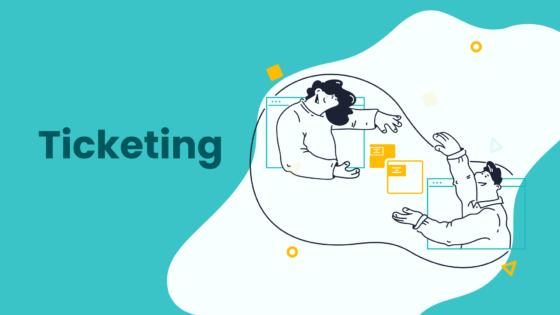
Zendesk - Comprehensive Omnichannel Support
Zendesk stands out as a leading call center software due to its robust omnichannel support. It integrates multiple communication channels, such as email, phone, and social media, into a unified platform. This ensures seamless customer interactions and allows agents to access a complete history of customer activity in real-time. For example, Zendesk's unified customer database captures every interaction, enabling agents to provide personalized and efficient service.
The platform also leverages AI tools to automate ticket creation and routing. This reduces response times and enhances collaboration between departments. Zendesk’s intelligent features ensure smooth communication across teams, improving overall service quality. Businesses benefit from its ability to track customer interactions across channels, ensuring no query goes unresolved. These capabilities make Zendesk a preferred choice for companies seeking advanced contact center software.
Zoho Desk - AI-Powered Ticketing and Workflow Automation
Zoho Desk excels in using AI to streamline ticketing and workflow automation. Its AI assistant, Zia, performs tasks like sentiment analysis, ticket tagging, and automated notifications. This enhances the ticketing process by identifying customer emotions and prioritizing urgent issues. Zoho Desk’s Blueprint feature further simplifies process management by automating workflows and identifying bottlenecks.
The platform’s extensive automation capabilities allow businesses to manage ticket assignments, categorization, and escalation efficiently. Advanced analytics provide insights into key metrics, such as resolution times and customer satisfaction scores. These tools help businesses optimize their operations and improve service quality. Zoho Desk’s focus on AI-driven automation makes it a powerful call center solution for companies aiming to enhance productivity and customer experience.
Freshdesk - User-Friendly Interface and Robust Features
Freshdesk is widely recognized for its intuitive interface and comprehensive features. It simplifies onboarding for new agents and streamlines daily operations. Users appreciate its robust ticketing software, which centralizes inquiries from various channels. This improves response times and fosters better collaboration among teams.
Freshdesk’s automation tools enhance efficiency by managing repetitive tasks, such as ticket routing and canned responses. The platform also provides advanced analytics to track performance metrics and identify areas for improvement. According to user reviews, Freshdesk scores 4.5 out of 5 on Capterra and 4.4 out of 5 on G2, reflecting its popularity among businesses. Its user-friendly design and powerful features make it one of the best help desk software options available today.
Sobot Ticketing System - Unified Platform with Intelligent Automation
The Sobot Ticketing System stands out as a unified platform designed to simplify and enhance your customer support operations. It integrates multiple communication channels, such as web chat, mobile apps, and social media, into a single dashboard. This ensures that you can manage all customer interactions seamlessly, improving both efficiency and satisfaction.
One of the key strengths of the Sobot Ticketing System is its intelligent automation. By automating workflows, it reduces manual effort and speeds up ticket resolution. For example, condition-triggered flows allow you to automate processes based on specific triggers, such as ticket priority or customer type. This ensures that urgent issues are addressed promptly.
| Feature | Description |
|---|---|
| Workflow Automation | Streamlines workflows to enhance efficiency. |
| Customizable Field | Allows customization to meet specific business needs. |
| SLA Management | Helps manage service level agreements effectively. |
| Canned Replies | Provides pre-written responses for common inquiries. |
| Condition-triggered Flow | Automates processes based on specific conditions. |
| Email Ticketing | Supports ticketing through email communication. |
The system also incorporates advanced tools like sentiment analysis to prioritize urgent cases. This feature ensures that critical issues receive immediate attention, enhancing customer satisfaction. Additionally, Sobot provides real-time analytics and reporting tools, enabling you to track performance and identify areas for improvement.
Tip: Use Sobot’s SLA management feature to set clear response and resolution times. This helps you meet customer expectations consistently.
With its ability to integrate seamlessly with popular CRM systems, the Sobot Ticketing System ensures a cohesive workflow across your organization. Whether you’re managing a small team or a large-scale operation, this scalable solution adapts to your needs, making it an ideal choice for businesses aiming to improve their call center ticketing system.
Jira Service Management - Advanced IT Ticketing Capabilities
Jira Service Management (JSM) excels in providing advanced IT ticketing capabilities tailored for enterprise needs. It is designed to handle complex processes and high ticket volumes, making it a reliable choice for growing businesses. JSM’s ability to capture feedback through surveys ensures that you can gather valuable insights post-resolution, helping you enhance customer satisfaction.
| Metric | Description |
|---|---|
| Capturing Feedback | JSM's survey features gather insights post-resolution, enhancing customer satisfaction. |
| Real-Time Adjustments | Enables quick responses to feedback, allowing agile service adjustments. |
| Scalability for Enterprise | Designed to handle increased ticket volumes and complex processes as businesses grow. |
| Performance at Scale | Maintains high performance even with a growing number of service requests. |
| Advanced Permissions | Efficiently manages roles and permissions for larger teams. |
| Customization and Workflows | Allows adaptation of workflows to meet evolving enterprise needs. |
JSM also supports enterprise-grade integrations, allowing you to create a cohesive IT ecosystem. Its advanced permissions system ensures that roles and responsibilities are clearly defined, improving team collaboration. With its focus on scalability and performance, Jira Service Management is a robust solution for businesses seeking to optimize their IT support operations.
Benefits of Using Call Center Ticketing Systems
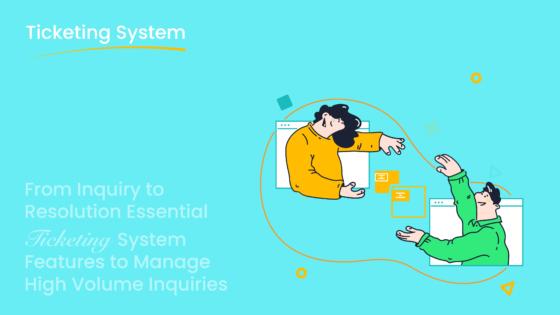
Improved Customer Satisfaction and Loyalty
Call center software plays a vital role in improving customer satisfaction and loyalty. By organizing customer inquiries effectively, ticketing software ensures no issue goes unresolved. Customers value quick responses, and 60% cite response time as the top factor for repeat purchases, according to HubSpot. Additionally, 54% of customers prioritize fast responses when choosing a brand, as reported by Freshworks.
Omnichannel support further enhances the customer experience by unifying communication channels. This allows agents to access real-time customer histories, reducing the need for customers to repeat themselves. For example, Sobot’s ticketing software integrates email, voicemail, and chat into one platform, ensuring seamless interactions. With tools like SLA management and automated workflows, you can meet customer expectations consistently, fostering loyalty.
| Statistic | Source |
|---|---|
| 63% of customers said companies need to get better at listening to feedback | Qualtrics |
| 60% of customers cited quick response time as the top factor for repeat purchases | HubSpot |
| 54% of customers say fast responses are critical when choosing a brand | Freshworks |
Enhanced Team Productivity and Collaboration
Ticketing systems streamline customer support operations, boosting team productivity and collaboration. These systems automate repetitive tasks like ticket routing and information searches, allowing agents to focus on high-value work. For instance, Sobot’s ticketing software uses intelligent automation to assign tickets based on priority or customer type, ensuring efficient handling.
Collaboration improves when agents can share information and assign tasks seamlessly. A robust help desk ticketing software ensures no case is overlooked, reducing customer frustration. Teams can also use real-time analytics to monitor performance and identify areas for improvement. This fosters a collaborative environment where agents work together to resolve issues quickly.
- Ticketing tools enhance agent productivity by automating routine tasks.
- Support agents collaborate effectively by sharing information and assigning tasks.
- Real-time data insights help teams optimize their workflows.
- Automation reduces manual effort, allowing agents to focus on customer engagement.
Faster Resolution Times for Customer Issues
Effective ticketing systems significantly reduce resolution times, a critical factor in customer satisfaction. Automated ticket routing assigns inquiries to the right agent or team, ensuring faster responses. According to the 2021 Zendesk Customer Experience Trends Report, quick resolution time is the top factor in customer satisfaction.
Sobot’s ticketing software excels in this area by prioritizing urgent issues through condition-triggered workflows. For example, ABC Couture achieved a 25% reduction in resolution times after implementing automated ticket routing. Additionally, real-time analytics in cloud-based solutions like Sobot’s help identify bottlenecks, enabling proactive adjustments.
- Automated ticket routing ensures faster resolution by assigning tickets to the right agent.
- Real-time insights reveal patterns, helping you improve processes.
- Proactive issue detection prevents delays, enhancing the overall customer experience.
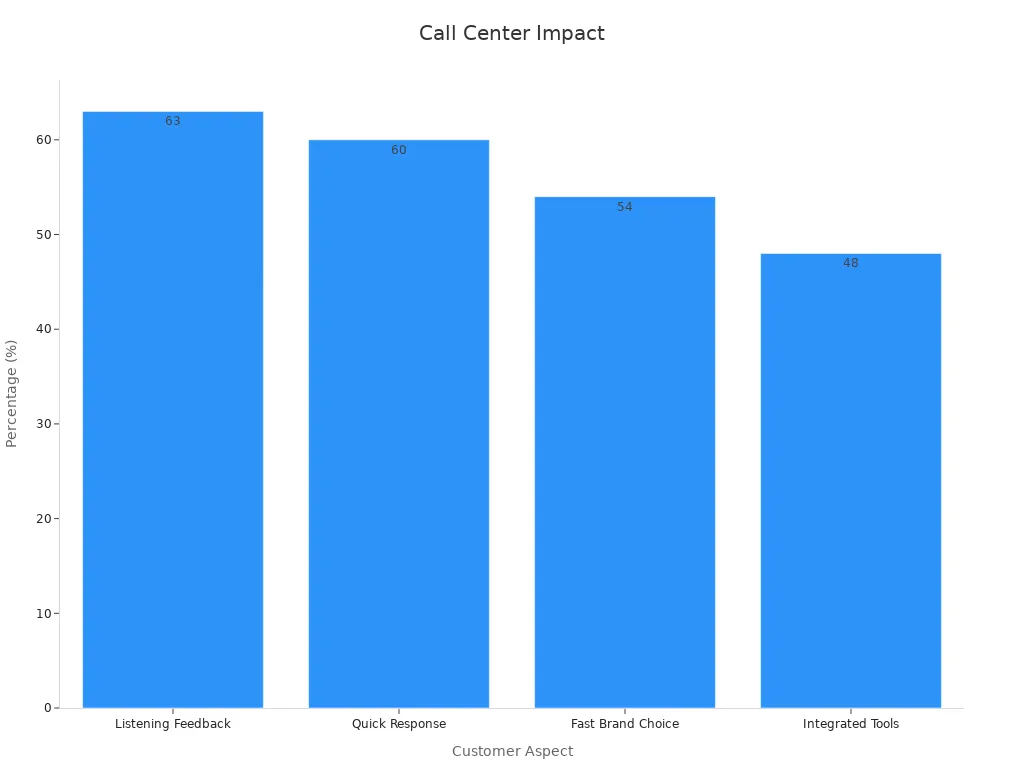
By leveraging cloud-based ticketing software, you can ensure faster resolutions, higher customer satisfaction, and improved loyalty.
Data-Driven Insights for Better Decision-Making
Call center ticketing systems provide powerful tools to help you make informed decisions. These systems collect and analyze customer interaction data, offering insights that improve service quality and operational efficiency. By using advanced analytics, you can identify trends, monitor performance, and address recurring issues effectively.
For example, data visualization tools in ticketing systems highlight customer satisfaction trends and resolution times. This allows you to track patterns and adjust your strategies to meet customer expectations. Automated query systems also deliver real-time insights, enabling you to respond quickly to emerging challenges. These features ensure your team stays proactive and efficient.
Tip: Use analytics to monitor issue categories. This helps you identify common problems and resolve them faster.
Sobot’s ticketing system excels in providing actionable insights. Its trusted analytics feature transforms raw data into meaningful reports. You can track metrics like SLA compliance, ticket statuses, and agent productivity. These insights empower you to optimize workflows and improve customer satisfaction. For instance, Sobot’s system categorizes tickets by priority, ensuring urgent issues are resolved promptly.
| Insight Type | Benefit |
|---|---|
| Customer Satisfaction Trends | Helps you understand customer needs and improve service delivery. |
| Resolution Time Analytics | Monitors response times to enhance efficiency. |
| Issue Category Tracking | Identifies frequent problems for quicker resolutions. |
In today’s digital-first world, data is essential for delivering exceptional customer service. By synchronizing ticketing systems with CRM software, you gain a holistic view of customer interactions. This integration enables personalized service and faster decision-making. Sobot’s omnichannel solution, for example, consolidates data from email, chat, and social media into one platform. This unified approach ensures your team has the context needed to provide seamless support.
By leveraging data-driven insights, you can enhance your call center’s performance and build stronger customer relationships. These tools not only improve decision-making but also position your business for long-term success.
How to Choose the Right Call Center Ticketing System
Identifying Business Needs and Goals
Choosing the right call center ticketing system starts with understanding your business needs and goals. Begin by identifying the challenges your team faces. Are you struggling with high ticket volumes, slow response times, or fragmented communication channels? Pinpointing these issues helps you find a system that aligns with your requirements.
For example, if your business handles inquiries across multiple platforms like email, chat, and social media, you need a system with omnichannel support. Research shows that 71% of customers prefer switching channels based on context. A ticketing system that integrates all channels ensures no communication gets lost. Additionally, consider scalability. If your business is growing, the system must handle increased ticket volumes without compromising efficiency.
Other factors to evaluate include ease of use, automation capabilities, and data security. A user-friendly interface ensures quick adoption by your team, while automation reduces manual tasks. Data security is equally critical, especially for industries like finance or healthcare, where compliance with regulations is mandatory.
Evaluating Features and Integration Capabilities
The features of a call center software determine its effectiveness. Look for tools that enhance productivity and improve the customer experience. Essential features include automated ticket assignment, SLA management, and advanced analytics. These tools streamline workflows and help you monitor performance.
Integration capabilities are equally important. The system should connect seamlessly with your existing tools, such as CRM or e-commerce platforms. For example, Sobot’s ticketing system integrates with Shopify, enabling businesses to manage customer interactions and sales data in one place. Open APIs and customizable workflows also allow you to tailor the system to your specific needs.
Industry experts recommend evaluating features through performance tracking and customer satisfaction measurement. Use tools to monitor agent productivity and resolution rates. Invite customers to rate their experience to ensure the system meets their expectations. These methods help you assess whether the software aligns with your operational goals.
| Method | Description |
|---|---|
| Performance Tracking | Tracks agent productivity, response time, and resolution rates. |
| Customer Satisfaction Measurement | Collects feedback to gauge how well the system meets customer needs. |
| Third-Party Integrations | Ensures compatibility with other business tools for shared data access. |
| Customization Options | Allows personalized workflows to enhance customer experience. |
Considering Budget and Pricing Models
Budget plays a significant role in selecting a call center ticketing system. Pricing models vary, so understanding them helps you make an informed decision. Common models include per agent, per device, per ticket, and per license. For small businesses, a per-agent model works well, as it charges based on the number of users. Larger organizations may prefer a per-ticket model, which scales with ticket volume.
Consider the total cost of ownership, including setup, customization, and maintenance fees. While some systems offer lower upfront costs, additional expenses can add up over time. Flexibility is another factor. Choose a pricing model that adapts to your changing needs. For instance, Sobot’s ticketing system offers scalable solutions, ensuring you only pay for what you use.
| Pricing Model | Description |
|---|---|
| Per agent | Charges per user account, ideal for small teams. |
| Per device | Suitable for businesses where not all employees need access. |
| Per ticket | Scales with ticket volume, making it flexible for growing businesses. |
| Per license | One-time purchase with potential additional maintenance costs. |
By balancing features, scalability, and cost, you can select a system that meets your operational and financial goals.
Testing Usability and Customer Support Options
Testing the usability of call center software ensures it meets your operational needs and delivers a seamless experience for both agents and customers. Begin by evaluating how intuitive the system is for your team. A user-friendly interface reduces training time and helps agents focus on resolving customer issues. For example, Sobot’s ticketing system offers a clean, unified dashboard that simplifies navigation and boosts productivity.
To assess usability effectively, follow these steps:
- Monitor Key Performance Indicators (KPIs): Track metrics like First Call Resolution (FCR) and Customer Satisfaction Score (CSAT). These indicators reveal how well the software supports your team in meeting customer expectations.
- Conduct Quality Assurance Tests: Use methods like call monitoring and scoring to evaluate agent performance. This helps identify areas where the software may need adjustments to improve efficiency.
Customer support options also play a critical role in your decision. Reliable support ensures you can resolve technical issues quickly, minimizing downtime. Look for vendors that offer 24/7 assistance, detailed documentation, and training resources. Sobot, for instance, provides comprehensive support, including FAQs, multilingual assistance, and proactive insights to optimize your operations.
Testing should also include real-world scenarios. Simulate high ticket volumes to see how the system performs under pressure. Check if it integrates smoothly with your existing tools, such as CRM platforms. Sobot’s call center software excels in this area, offering seamless integration with platforms like Shopify to unify customer interactions and sales data.
By thoroughly testing usability and evaluating support options, you ensure the software aligns with your business goals. This approach not only enhances agent productivity but also improves customer satisfaction.
Investing in a robust call center ticketing system in 2025 is essential for businesses aiming to deliver exceptional customer support and streamline operations. These systems unify communication channels, automate workflows, and provide actionable insights, enabling faster resolutions and improved customer satisfaction. For instance, customer-obsessed firms grow 2.5 times faster and retain 2.2 times more customers annually than those without a customer-centric approach, according to Forrester.
Sobot's Ticketing System exemplifies these benefits with its unified platform, intelligent automation, and SLA management. It integrates seamlessly with existing tools, scales with your business, and automates routine tasks, ensuring efficiency and adaptability. Selecting the right solution, like Sobot, enhances customer support operations and positions your business for long-term success.
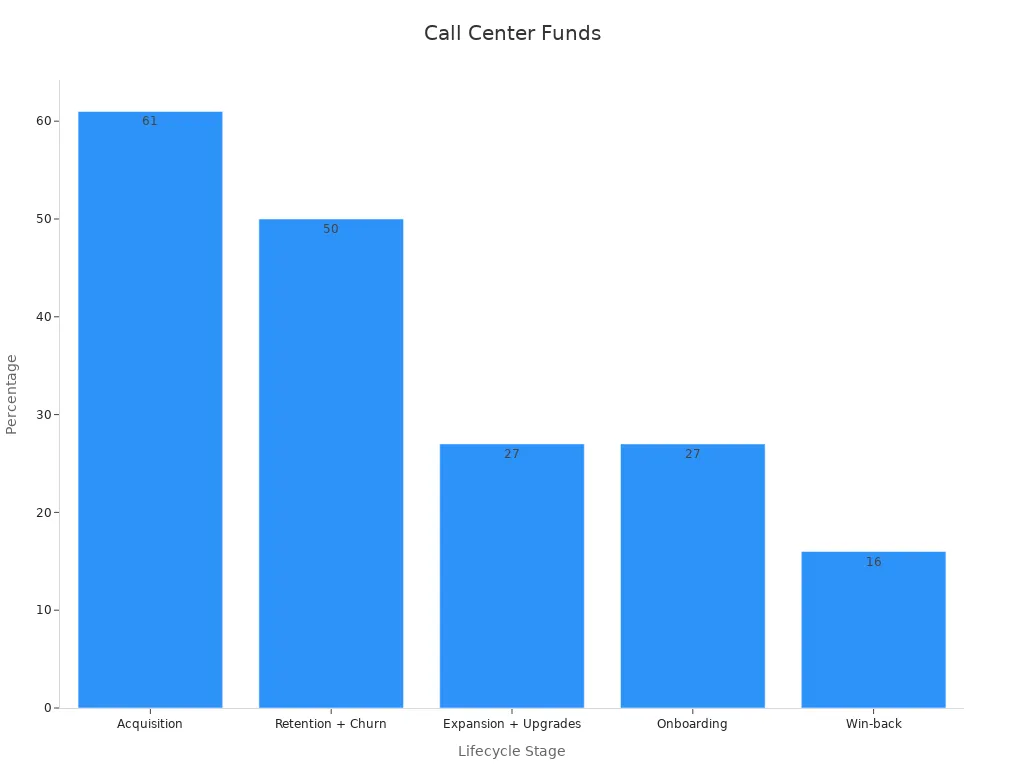
Tip: Evaluate your specific needs, such as integration capabilities and scalability, to choose a system that aligns with your goals.
FAQ
What is the main purpose of a call center ticketing system?
A call center ticketing system helps you manage customer inquiries efficiently. It organizes, tracks, and resolves issues across multiple channels like email, chat, and social media. For example, Sobot’s system integrates all communication channels into one platform, ensuring no query gets overlooked.
How does automation improve ticketing systems?
Automation reduces manual tasks like ticket routing and response generation. This saves time and boosts productivity. Sobot’s ticketing system uses AI to automate workflows, ensuring faster resolutions. For instance, condition-triggered flows prioritize urgent tickets, helping you address critical issues promptly.
Can ticketing systems handle multilingual support?
Yes, many ticketing systems, including Sobot’s, support multiple languages. This feature allows you to serve a global audience effectively. For example, Sobot’s system translates tickets into the customer’s preferred language, ensuring clear communication and better satisfaction.
How do ticketing systems integrate with other tools?
Modern ticketing systems integrate seamlessly with CRM and e-commerce platforms. Sobot’s system connects with tools like Shopify, enabling you to unify customer interactions and sales data. This integration streamlines workflows and improves operational efficiency.
Why is omnichannel support important in ticketing systems?
Omnichannel support ensures customers can reach you through their preferred channels, such as email, chat, or social media. Sobot’s ticketing system consolidates these interactions into one dashboard. This unified approach improves agent efficiency and enhances the customer experience.
See Also
Best Reviewed Contact Center Solutions for the Year 2024
Leading Cloud Contact Center Solutions to Consider in 2024
Best 10 Call Center Analytics Tools Available in 2024